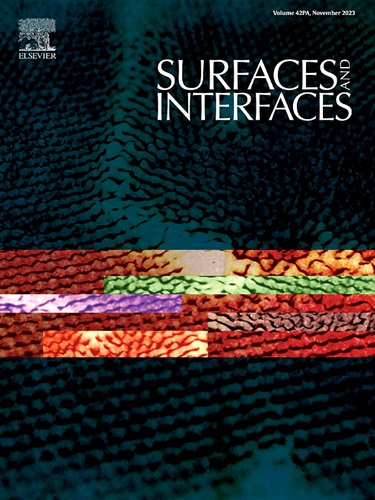Enhanced visible light responsive piezoelectric photocatalysis based on (Na, K)NbO3 nanostructures for effective organic pollutant degradation
IF 5.7
2区 材料科学
Q2 CHEMISTRY, PHYSICAL
引用次数: 0
Abstract
Incorporation of the piezoelectric effect into photocatalysis provides a built-in polarization field and has the potential to effectively separate the photo-generated electron-hole pairs, which can greatly enhance the degradation performance of the organic pollutants. For this reason, the search for lead-free ferroelectric materials that can combine photocatalytic and piezocatalytic capabilities is highly demanded. In this work, a series of (Na, K)NbO3 with various Na+/K+ ratios were fabricated by a simple hydrothermal method. When the NaOH to KOH ratio was 50/50, the Na0.5K0.5NbO3 nanostructure displayed morphotropic phase boundary separating orthorhombic and monoclinic phases. Under the co-excitation of ultrasonic vibration and visible light irradiation, the Na0.5K0.5NbO3 sample exhibited an excellent ability for the degradation of Eosin Yellow (EY) dye, which can degrade the dye completely within 5 h, which was 3.67 times and 1.52 times faster than that of piezocatalysis under ultrasonication and photocatalysis under light illumination alone. These findings offer promising implications for the advancement of piezo-photocatalysts that employ tiny mechanical vibrations and visible light irradiation to efficiently degrade organic contaminants.

求助全文
约1分钟内获得全文
求助全文
来源期刊

Surfaces and Interfaces
Chemistry-General Chemistry
CiteScore
8.50
自引率
6.50%
发文量
753
审稿时长
35 days
期刊介绍:
The aim of the journal is to provide a respectful outlet for ''sound science'' papers in all research areas on surfaces and interfaces. We define sound science papers as papers that describe new and well-executed research, but that do not necessarily provide brand new insights or are merely a description of research results.
Surfaces and Interfaces publishes research papers in all fields of surface science which may not always find the right home on first submission to our Elsevier sister journals (Applied Surface, Surface and Coatings Technology, Thin Solid Films)
 求助内容:
求助内容: 应助结果提醒方式:
应助结果提醒方式:


